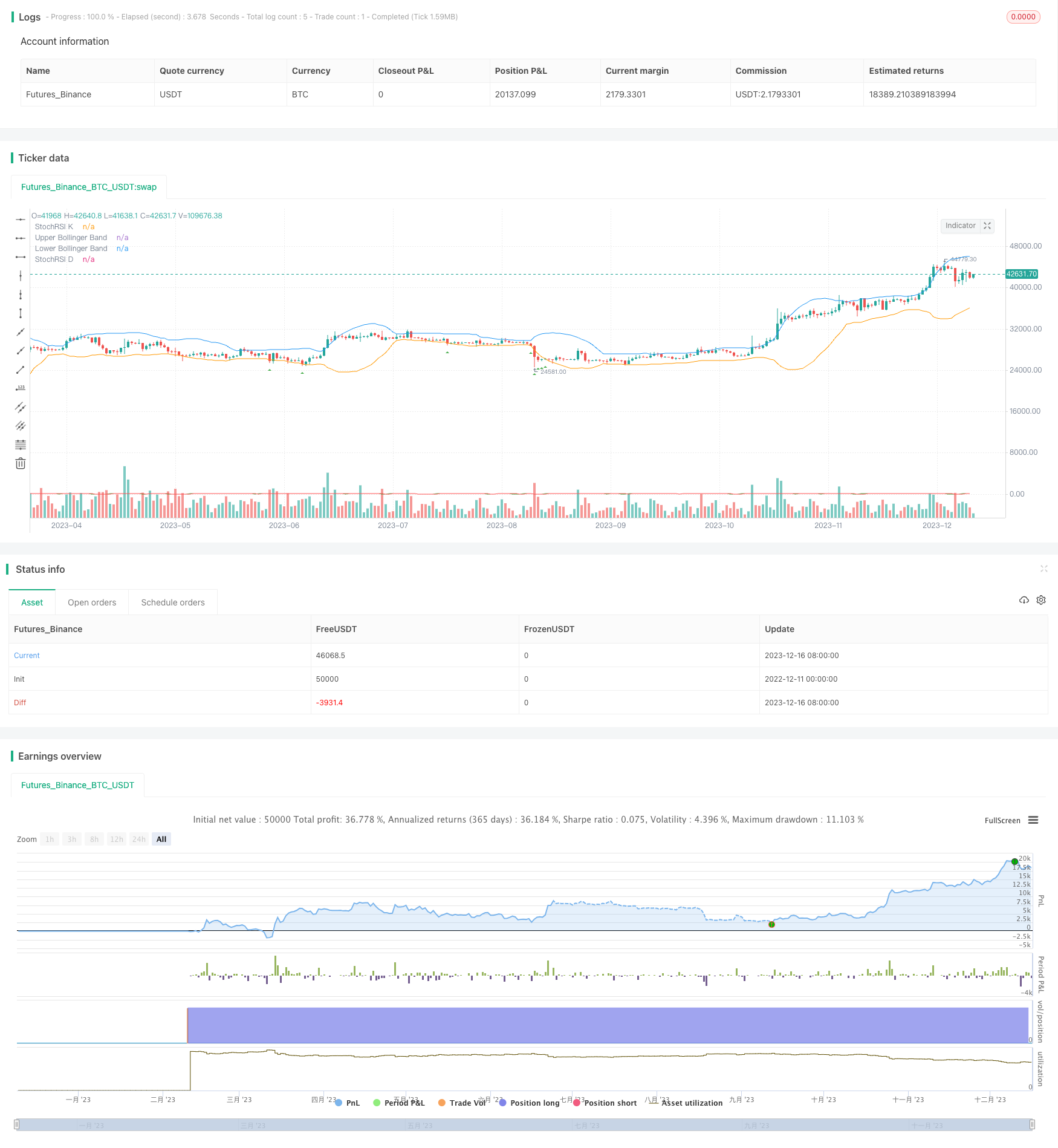
策略概述
本策略的名称为“双指标引领策略”。它是一个仅做多的高频交易策略,旨在通过布林带和 Stochastic RSI 两个指标产生频繁的交易信号。该策略适用于追求高交易频率的交易者。
策略原理
指标计算
首先,根据用户设定的布林带长度和标准差参数计算布林带的上轨、中轨和下轨。中轨线代表关闭价格的简单移动平均线,上下轨代表价格波动的标准差。
然后,根据 Stochastic RSI 的长度、K 周期和 D 周期参数计算 StochRSI 指标。该指标结合 RSI 和随机指标的特性,测量资产价格的动量。
买入条件
当收盘价低于布林带下轨时,触发买入条件。此时表示价格处于最近波动范围的低位,是一个潜在的买入机会。
入场和退出
满足买入条件时,策略进入做多头寻机,发出买入信号。
代码中没有设置退出逻辑,需要交易者自己根据品种和时间框架设置获利或止损退出。
策略优势
- 利用布林带判断价格可能反转的时机点
- StochRSI 提供额外的动量判断
- 实现频繁交易,适合高频策略
- 仅做多设计简单
- 可自由调整参数获优
策略风险
- 存在超买超卖的风险
- 高频交易易受交易成本影响
- 需设定获利或止损退出逻辑
- 需严格资金管理
可通过加入双向交易、优化参数、设置止损和止盈、评估成本对冲来降低风险。
策略优化方向
- 增加卖出条件实现双向交易
- 优化参数组合减少错误信号
- 加入趋势判断指标过滤
- 设置止损止盈确保风险管理
总结
本策略提供了一个基于布林带与 StochRSI 指标的高频交易策略框架。交易者可以根据自己的交易目标和市场条件,调整参数设置、加入风险管理措施等来优化该策略,实现频繁交易的需求。
策略源码
//@version=5
strategy("High Frequency Strategy", overlay=true)
// Define your Bollinger Bands parameters
bollinger_length = input.int(20, title="Bollinger Bands Length")
bollinger_dev = input.float(2, title="Bollinger Bands Deviation")
// Calculate Bollinger Bands
sma = ta.sma(close, bollinger_length)
dev = bollinger_dev * ta.stdev(close, bollinger_length)
upper_band = sma + dev
lower_band = sma - dev
// Define your StochRSI parameters
stoch_length = input.int(14, title="StochRSI Length")
k_period = input.int(3, title="K Period")
d_period = input.int(3, title="D Period")
// Calculate StochRSI
rsi = ta.rsi(close, stoch_length)
k = ta.sma(ta.stoch(rsi, rsi, rsi, k_period), k_period)
d = ta.sma(k, d_period)
// Define a buy condition (Long Only)
buy_condition = close < lower_band
// Place orders based on the buy condition
if (buy_condition)
strategy.entry("Buy", strategy.long)
// Optional: Plot buy signals on the chart
plotshape(buy_condition, color=color.green, style=shape.triangleup, location=location.belowbar, size=size.small)
// Plot Bollinger Bands on the chart
plot(upper_band, title="Upper Bollinger Band", color=color.blue)
plot(lower_band, title="Lower Bollinger Band", color=color.orange)
plot(k, title="StochRSI K", color=color.green)
plot(d, title="StochRSI D", color=color.red)